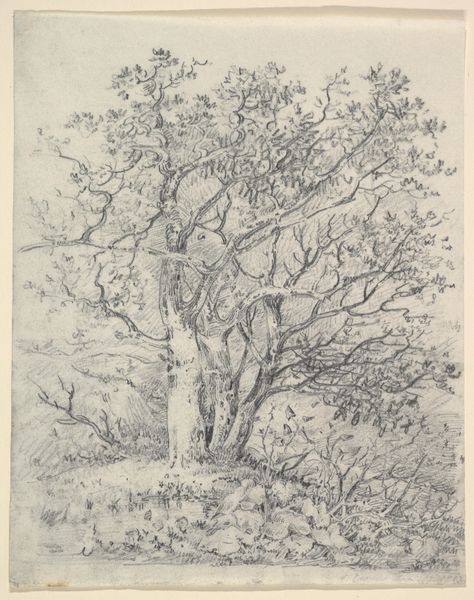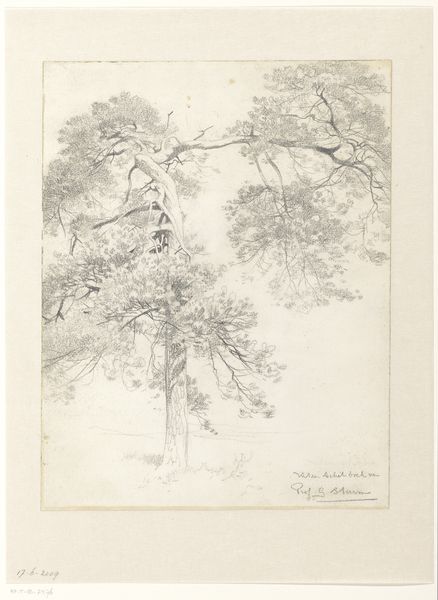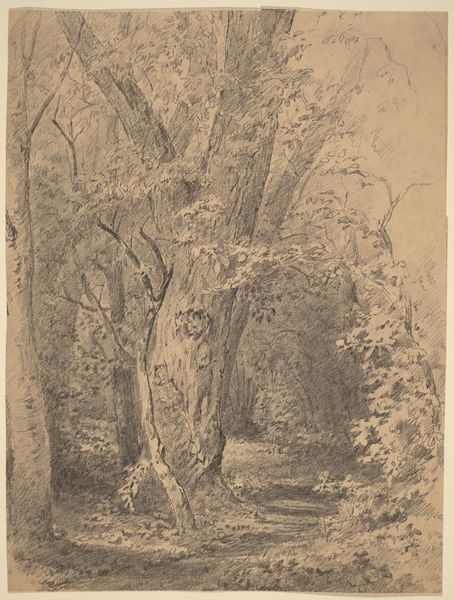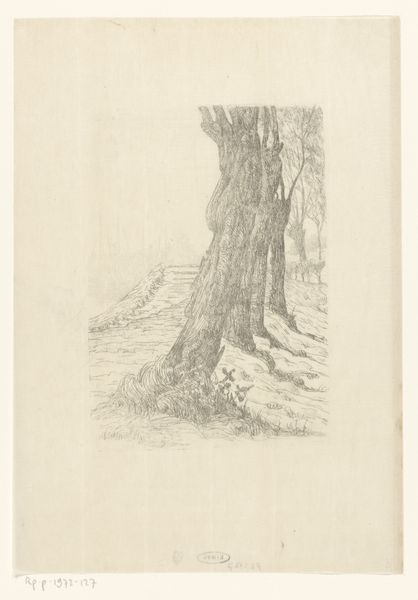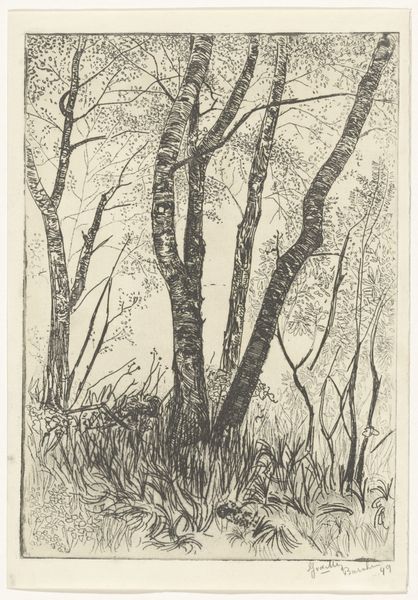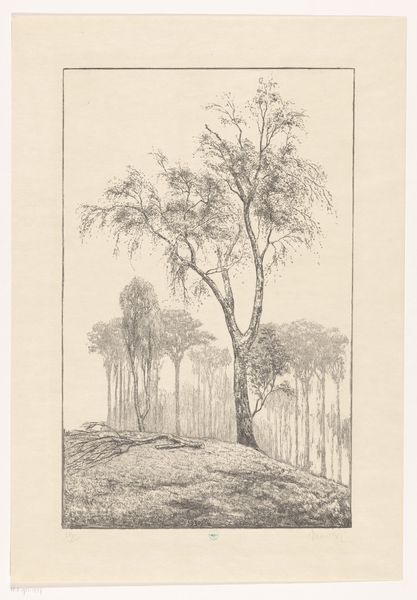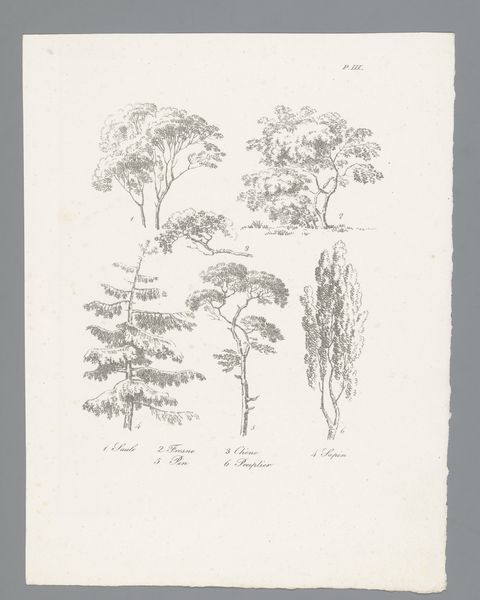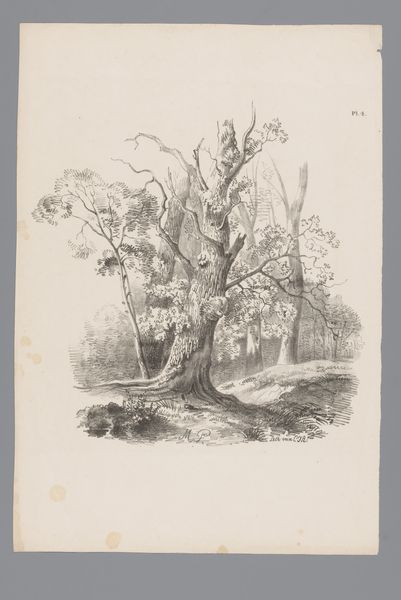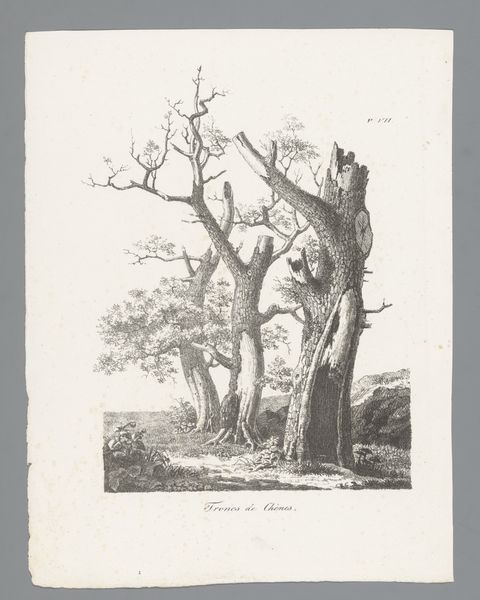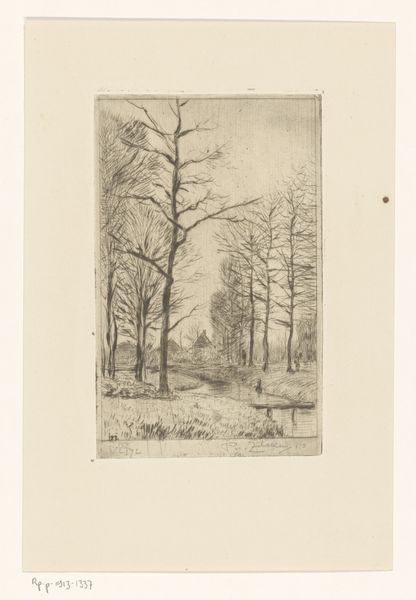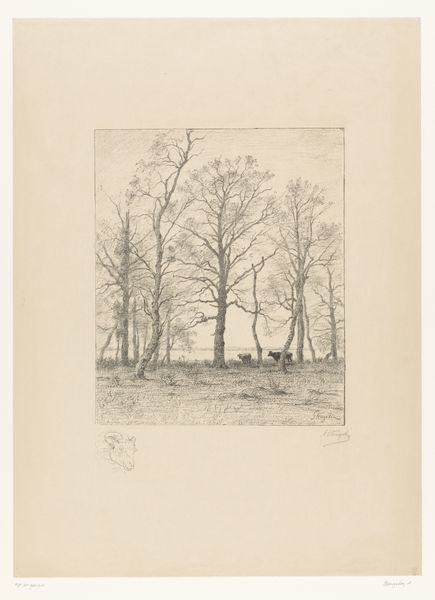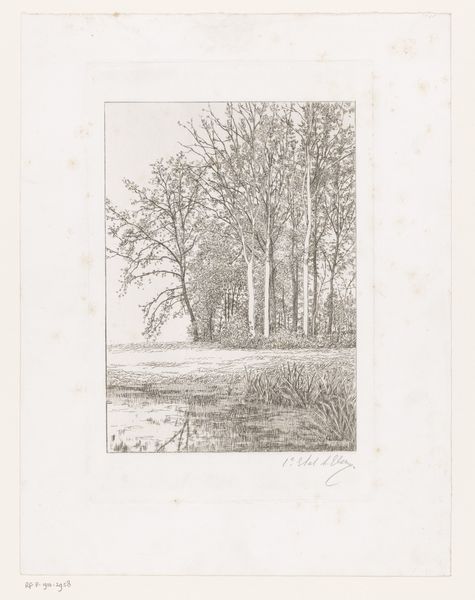
drawing, paper, ink
#
drawing
#
caricature
#
paper
#
ink
#
line
Dimensions: height 275 mm, width 215 mm
Copyright: Rijks Museum: Open Domain
Curator: Let's turn our attention to this fascinating drawing from 1884 by Johan Michaël Schmidt Crans, titled "Spotprent over de politieke problemen," or "Cartoon about the political problems." Editor: My first impression is one of decay and fragility. The spindly tree seems almost skeletal, stripped bare by some unseen force. Curator: Indeed. What immediately grabs me is the stark materiality of the ink on paper, and the way Crans uses these simple means to create a complex commentary. Look closely; he’s meticulously inscribed various financial institutions and political entities onto each branch, labeling the failing colonial banks and industries. Editor: It clearly speaks to a period of upheaval, where financial and political anxieties are quite literally "weighing down" the tree. Consider the title – it signals directly to the socio-political quagmire, and coupled with Heine’s quote which speaks of wind stripping the leaves in a dreary November, creates a powerful metaphor for loss and instability. Curator: Precisely! Notice the almost chaotic linework that comprises the canopy—it really adds to the feeling of a world spinning out of control. And yet, there’s something methodical in how he breaks down each aspect of what constitutes that crisis. This highlights the labor involved in making visible something otherwise obscure. Editor: Absolutely. We also have to consider the visual vocabulary of caricature itself as a potent form of political resistance. It’s about amplifying anxieties but also sparking critical engagement with dominant structures of power. This is where artistic choices reflect deeply entrenched socioeconomic divides that are often underrepresented within historical discourse. Curator: Right. The cartoon, a print accessible to a wider audience, facilitated immediate engagement with critical commentary outside academic spheres. Editor: Seeing how Crans depicted late 19th-century Holland really makes you reflect on present-day parallels with corporatism and political unrest… and reminds us of the continuing value of art as an incisive means of critique and awareness. Curator: Indeed, whether you approach it as an example of the means by which such critical engagement with power is materialised, or simply as a raw visualisation of turbulent times, Crans’ drawing really embodies that sentiment in poignant form.
Comments
No comments
Be the first to comment and join the conversation on the ultimate creative platform.

